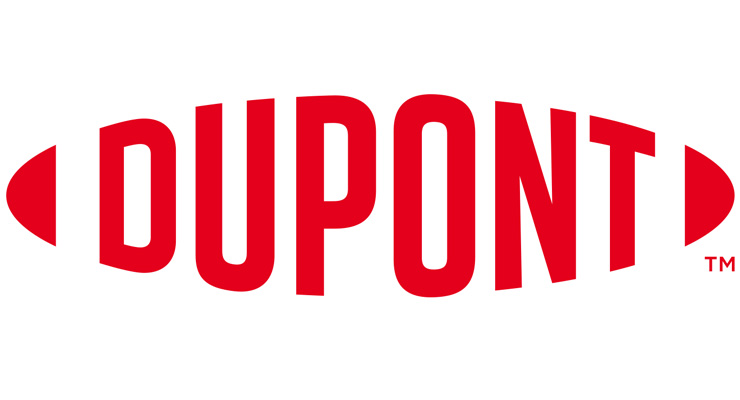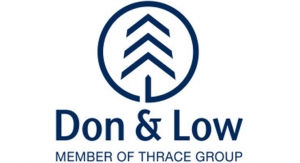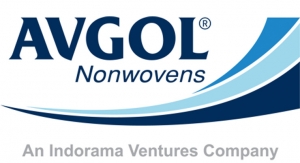09.02.21
Wilmington, DE
www.dupont.com
2020 Nonwovens Sales: $1 billion
Key Personnel
Marc Doyle, president, CEO specialty products division; Kevin Corby, global technology, director
Plants
Richmond, VA; Luxembourg
ISO Status
All plants are ISO 9002 certified including the Luxembourg facility
Brands
DuPont Tyvek, Typar
Major Markets
Construction, healthcare, protective apparel, industrial filtration, absorbents, home furnishings, envelopes, geotextiles, graphics, packaging, footwear, automotive
More than 18 months after launching its #TyvekTogether program in response to increased demand for personal protective apparel (PPE) in the face of the Coronavirus, DuPont continues to adjust production volumes for its Tyvek flashspun nonwovens. In the company’s second quarter earnings call, executives reported that results were influenced by output shifting from PPE to multiple other applications, which is resulting in an expected increase in changeover and lower production rates and volumes.
However, the market for Tyvek is much broader than just PPE, and DuPont continues to ramp up supply to key markets including construction, medical packaging and graphics. For example, the company’s Shelter Solutions business has reported sales growth of more than 30%, which reflects continued strength in North American residential construction for products like Styrofoam and Tyvek house wrap and in retail channels for do-it-yourself applications. Commercial construction also continues to improve as global demand improves.
Looking back to 2020, in April, in the face of unprecedented demand for PPE, DuPont launched the #TyvekTogether program to increase the overall availability of Tyvek personal protective garments to help combat the spread of Covid-19 and protect health care workers. This initiative included partnerships with converters to make non-surgical isolation gowns as well as a new investment in Richmond, VA.
“There’s a critical need for protective apparel, and we believe that working with other companies to convert their existing cut-and-sew manufacturing capacity to protective garment fabrication is the fastest way to protect more people,” says John Richard, vice president and general manager DuPont Safety Solutions.
Included in this effort is investment in equipment and technology at DuPont’s Richmond, VA, plant to significantly increase its production of Tyvek and Tychem garments globally to meet the ever-increasing demand for PPE. Additionally, the #TyvekTogether Program introduced a new specialized Tyvek fabric to enable an increase in the amount of garment production for the Covid-19 response to 15 million garments a month.
Tyvek style 1222A has similar barrier properties to the core DuPont Tyvek 400 garment offerings with adjusted fabric drape and hand to optimize material usage. It is available in roll-good form to existing and new customers with available cut-and-sew capabilities to increase the total amount of Tyvek garments available as quickly as possible.
In the months since announcing the #TyvekTogether program, DuPont has launched several partnerships. Companies as diverse as Ansell, Home Depot, Under Armour, Thermaxx and Ferrara International have joined in the program to help design, develop and supply PPE materials to fight the spread of Covid-19.
In April 2021, DuPont’s efforts were honored by the American Chemistry Council which led to the supply of more than 100 million Tyvek garments to support frontline responders via garment production in 12 countries. DuPont sites also mobilized to manufacture and donate 44,000 liters of hand sanitizer to local communities as well as contributions of food, personal protective equipment, and many other donations.
DuPont’s Tyvek business is a part of its Safety and Construction business. During its second quarter earnings call, the business reported that demand for Tyvek protective garments increased 60% compared to last year, which was enabled by efforts to increase capacity and redirect supply from non-personal protection markets. Despite the strength in Tyvek protective garments, sales in other segments of the business including construction, which has traditionally been Tyvek’s key market, have declined, having been impacted by stay-at-home orders issued across the globe.
Prior to the pandemic, DuPont was already investing in Tyvek production. In June 2018, the company said it would invest more than $400 million to expand Tyvek nonwovens capacity at its facility Luxembourg. The production expansion, which will add a new building and a third operating line at the site, is scheduled to start up in 2021.
In addition to PPE, Tyvek is found in a number of key markets including building envelope solutions, medical packaging and graphics and protective packaging.
In corporate news, DuPont merged with Dow to form DowDuPont in late 2017 creating one of the largest chemical specialty companies in the world. Then, in June 2019, DowDuPont broke into three spin-off companies—agriculture, material science and specialty products—which were each to be independent and publicly traded. The material science business, which contains Tyvek, was renamed DuPont. During the spin off DuPont combined Kevlar, Nomex and Tyvek brands together under a single Safety Business. Merging these brands’ collective scale and dexterity are delivering and uncovering results that make an impact for personal protection, aerospace, automotive, healthcare, defense, electrical infrastructure and other industrial markets.
www.dupont.com
2020 Nonwovens Sales: $1 billion
Key Personnel
Marc Doyle, president, CEO specialty products division; Kevin Corby, global technology, director
Plants
Richmond, VA; Luxembourg
ISO Status
All plants are ISO 9002 certified including the Luxembourg facility
Brands
DuPont Tyvek, Typar
Major Markets
Construction, healthcare, protective apparel, industrial filtration, absorbents, home furnishings, envelopes, geotextiles, graphics, packaging, footwear, automotive
More than 18 months after launching its #TyvekTogether program in response to increased demand for personal protective apparel (PPE) in the face of the Coronavirus, DuPont continues to adjust production volumes for its Tyvek flashspun nonwovens. In the company’s second quarter earnings call, executives reported that results were influenced by output shifting from PPE to multiple other applications, which is resulting in an expected increase in changeover and lower production rates and volumes.
However, the market for Tyvek is much broader than just PPE, and DuPont continues to ramp up supply to key markets including construction, medical packaging and graphics. For example, the company’s Shelter Solutions business has reported sales growth of more than 30%, which reflects continued strength in North American residential construction for products like Styrofoam and Tyvek house wrap and in retail channels for do-it-yourself applications. Commercial construction also continues to improve as global demand improves.
Looking back to 2020, in April, in the face of unprecedented demand for PPE, DuPont launched the #TyvekTogether program to increase the overall availability of Tyvek personal protective garments to help combat the spread of Covid-19 and protect health care workers. This initiative included partnerships with converters to make non-surgical isolation gowns as well as a new investment in Richmond, VA.
“There’s a critical need for protective apparel, and we believe that working with other companies to convert their existing cut-and-sew manufacturing capacity to protective garment fabrication is the fastest way to protect more people,” says John Richard, vice president and general manager DuPont Safety Solutions.
Included in this effort is investment in equipment and technology at DuPont’s Richmond, VA, plant to significantly increase its production of Tyvek and Tychem garments globally to meet the ever-increasing demand for PPE. Additionally, the #TyvekTogether Program introduced a new specialized Tyvek fabric to enable an increase in the amount of garment production for the Covid-19 response to 15 million garments a month.
Tyvek style 1222A has similar barrier properties to the core DuPont Tyvek 400 garment offerings with adjusted fabric drape and hand to optimize material usage. It is available in roll-good form to existing and new customers with available cut-and-sew capabilities to increase the total amount of Tyvek garments available as quickly as possible.
In the months since announcing the #TyvekTogether program, DuPont has launched several partnerships. Companies as diverse as Ansell, Home Depot, Under Armour, Thermaxx and Ferrara International have joined in the program to help design, develop and supply PPE materials to fight the spread of Covid-19.
In April 2021, DuPont’s efforts were honored by the American Chemistry Council which led to the supply of more than 100 million Tyvek garments to support frontline responders via garment production in 12 countries. DuPont sites also mobilized to manufacture and donate 44,000 liters of hand sanitizer to local communities as well as contributions of food, personal protective equipment, and many other donations.
DuPont’s Tyvek business is a part of its Safety and Construction business. During its second quarter earnings call, the business reported that demand for Tyvek protective garments increased 60% compared to last year, which was enabled by efforts to increase capacity and redirect supply from non-personal protection markets. Despite the strength in Tyvek protective garments, sales in other segments of the business including construction, which has traditionally been Tyvek’s key market, have declined, having been impacted by stay-at-home orders issued across the globe.
Prior to the pandemic, DuPont was already investing in Tyvek production. In June 2018, the company said it would invest more than $400 million to expand Tyvek nonwovens capacity at its facility Luxembourg. The production expansion, which will add a new building and a third operating line at the site, is scheduled to start up in 2021.
In addition to PPE, Tyvek is found in a number of key markets including building envelope solutions, medical packaging and graphics and protective packaging.
In corporate news, DuPont merged with Dow to form DowDuPont in late 2017 creating one of the largest chemical specialty companies in the world. Then, in June 2019, DowDuPont broke into three spin-off companies—agriculture, material science and specialty products—which were each to be independent and publicly traded. The material science business, which contains Tyvek, was renamed DuPont. During the spin off DuPont combined Kevlar, Nomex and Tyvek brands together under a single Safety Business. Merging these brands’ collective scale and dexterity are delivering and uncovering results that make an impact for personal protection, aerospace, automotive, healthcare, defense, electrical infrastructure and other industrial markets.






